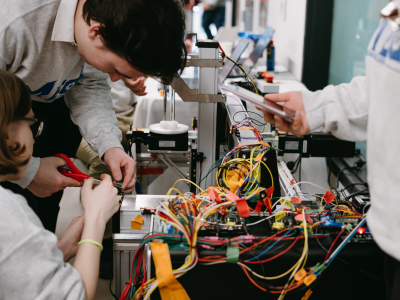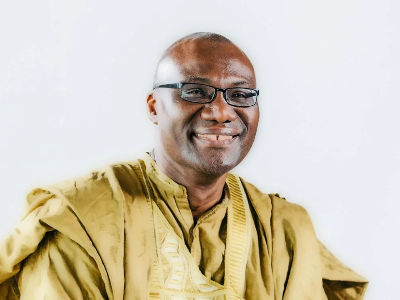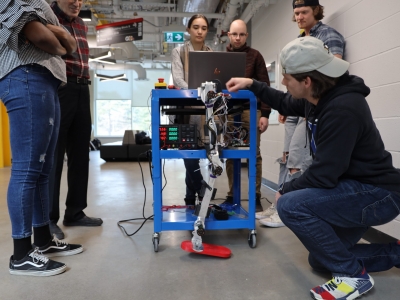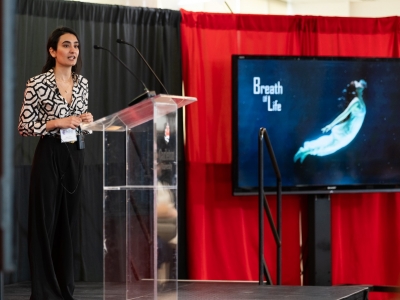Human-computer interaction master’s student Christopher Burt placed third in the 2014 Three-Minute Thesis competition at Carleton. This story on his research ran in The Charlatan.
Christopher Burt is developing a motion-based game, with the help of student volunteers, that uses sensors to lead the user through a story with exercise movements.
“Mine is the only [motion-based] game that I’m aware of that uses one continuous story,” Burt said.
In this way, he said his thesis project differs from popular motion-based games like Wii Sports or Dance Dance Revolution.
His game is piracy-themed, featuring a group of monkeys defending their boat from an enemy ship. In one part, the user has to squat to make the monkey trim the sails.
“When you strike a pose, it takes a snapshot of what the sensor data looks like there, and when you strike the same pose later, it says ‘I recognize that pose,’” Burt explained. “The platform is a network of motion sensors. There are two on the arms and two on the legs.”
The project is about using exercise games as alternative fitness solutions, Burt said.
“I’m focusing on telling a story in order to promote the exercise,” he said. “The main idea is to test out this mixture of elements: full-body interface, a well-presented story to engage the player, and adaptive difficulty.”
A large part of the research is tracking participants’ heart rates using a tool in development by Microsoft to make sure they’re getting a good workout.
Burt said one of the most interesting parts of the project is observing variation in heart rates.
“I had one guy in here who did martial arts his whole life and he had a lot of control over his heart rate. He would take one deep breath and just focus and his heart rate would drop by like 20 beats,” he said.
By working with up to 60 participants, Burt said he hopes to average the population to make sure the exercise works for anyone.
“This project is super fun when the players have fun,” Burt said.
Some participants will shout in surprise when the story takes an unexpected turn, he said, which shows the physical and mental investment participants develop with the game.
As the field becomes better known, Burt said more attention will be paid to achieving both of these functions.
Motion-based game technology isn’t “the hugest field,” Burt said, “but it’s strong.”
The draft version of his game is scheduled to be complete in April.



